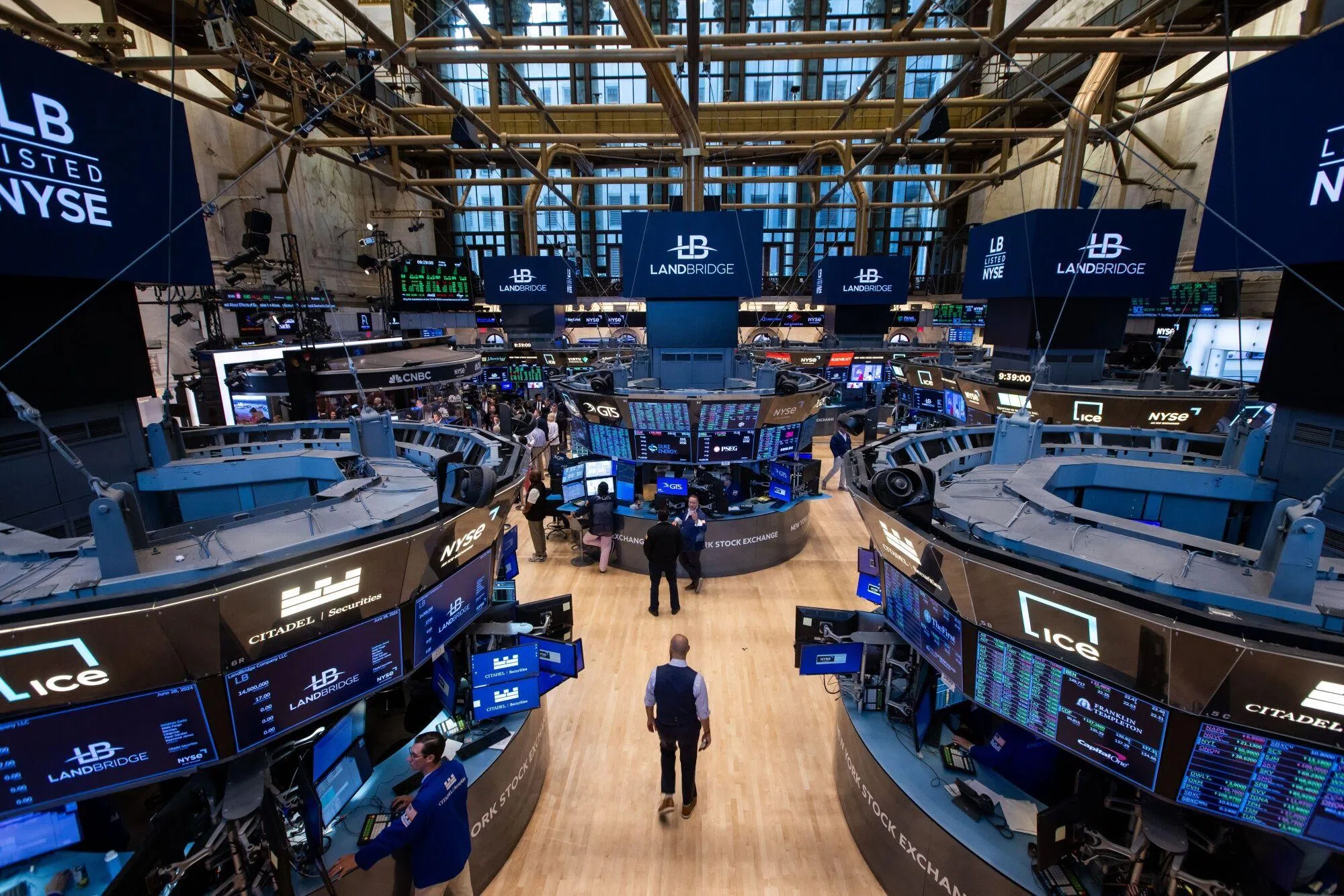ADD political turmoil to the long list of outside influences that are failing to thwart the 2024 bull market.
Investor resilience was on display again in a week in which high election drama could not keep the S&P 500 from doing what it has done in nine of the last 11 weeks: go up, this time in all sessions.
Even markets that initially lurched on President Joe Biden’s debate travails, such as Treasuries, calmed appreciably as economic data bolstered the case for rate cuts.
For now, however tumultuous the backdrop, the rally in risk assets is powering on, fuelled by conviction that the economy is expanding enough to avoid a recession while still warranting Federal Reserve easing.
Corporate credit and commodities joined the weekly advance.
“The Federal Reserve remains the dominant factor, and the belief that rate cuts will eventually take place,” said Mark Freeman, chief investment officer at Socorro Asset Management.
BT in your inbox
Start and end each day with the latest news stories and analyses delivered straight to your inbox.
As for politics, “the question is whether there will be a significant shift in fiscal policy”, he said. “At the moment, right or wrong, the assumption is there will not be.”
The S&P 500 gained 2 per cent in the week, the most since April, as data showing a contraction in services industries and an uptick in the unemployment rate reinforced optimism on rate cuts.
Ten-year Treasury yields, which initially spiked after Biden’s disastrous Jun 27 performance spurred bets that Donald Trump’s return to office would herald looser fiscal policy, erased the increase, as did the dollar, falling for the first week since May.
While the relentless advance in equities was welcomed by bulls, some of whom saw Trump’s improving odds as a catalyst, it is creating some unusual backdrops heading into the elections.
One is simply their altitude: at 26 times earnings, the S&P 500 trades at a higher valuation now than it has on any election day going back to at least 1990, data compiled by Bloomberg show.
While valuations are famously a poor tool for market timing, the elevated state of equities may be reason to lower expectations for their performance under whoever wins the election in November.
“Today’s lofty valuations for US megacaps suggests significant underperformance over the coming decade, and because they make up such a dominant share, returns for the overall US market are also likely to be pretty muted,” said Dan Suzuki, deputy chief investment officer at Richard Bernstein Advisors.
At the same time, comparably high price-earnings ratios were in play when Biden won four years ago, and have proved little impediment to market progress.
The S&P 500 is up 65 per cent since he defeated Trump in November 2020.
Equities were again led this week by technology megacaps amid optimism over their earnings resilience during the boom in artificial intelligence.
Financial shares, viewed as beneficiary of a potential Trump victory in part due to his deregulation agenda, advanced, but only at about one-quarter the rate as the Nasdaq 100.
While it is tempting to ascribe market moves to changing political tides, doing so now – four months out from the election, in a race where each candidate has both market-friendly and unfriendly elements in their agendas – is a questionable practice, says Gideon Strategic Partner senior portfolio manager, Giorgio Caputo.
What is clear is investors keep getting what they want from data: a weakening economy where pricing pressures gradually ease.
“This brings the Fed put back into play,” said Caputo, referring to the tendency of the central bank to come to the rescue of the market. “Market participants are encouraged.”
In another sign that politics has yet to fully register in markets, Bitcoin plunged despite rising odds for Trump, whose embrace of cryptocurrencies has become more overt in recent months.
Traders attributed the pullback to other forces, including expected selling from the estate of bankrupt exchange Mt Gox.
The difficulty of resisting ever-elevating equities was illustrated by news from the strategist space.
Marko Kolanovic, JPMorgan Chase’s famously bearish forecaster, was replaced.
Meanwhile, Piper Sandler’s researchers said they will stop publishing predictions of where the S&P 500 will end the year because over-concentration in the gauge has made them futile.
“The stock market really has been pretty consistent all year: the Magnificent Seven up, everything else not so much,” said Jeff Muhlenkamp, whose namesake fund has beaten 97 per cent of its peers in the past three years.
“The hard part of that is believing that it will continue given the rich valuations of the leaders. Yet so far it has.” BLOOMBERG







